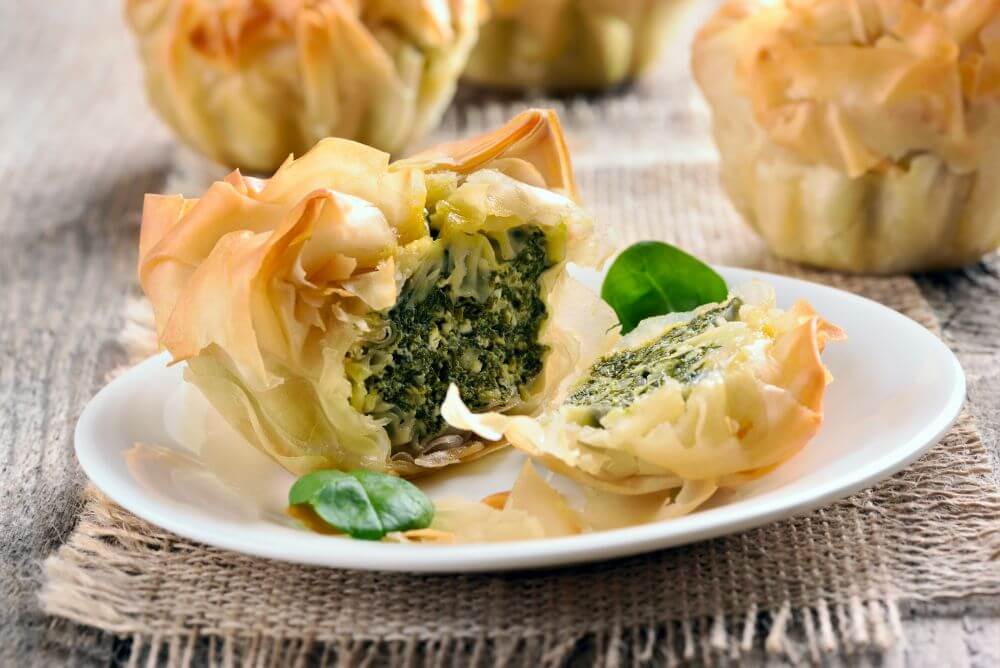How to make healthier pies

It’s safe to say that pies are a popular food in New Zealand as we eat 70 million of them every year!
Homemade pies are a quick and easy way to transform leftovers into a new meal. Even small amounts of leftovers can be used and there are many different ways to make a pie.
Despite being delicious, many of us don’t indulge in pies as often as we would like because we know these buttery treats aren’t good for our waistlines.
Love Food Hate Waste has partnered with the Heart Foundation to share a few tips on how to make your homemade pies a bit more nutritious.
Halve the amount of pastry that you use
Pastry is very high in fat, so only using pastry on the top or the bottom of your pie is an easy way to reduce the fat and calorie content. Using pastry on the bottom will work well for a tart-like pie or if you are making pies in muffin tins, while pot pies work well with just a pastry lid. Using a lattice design on the top of the pie is not only a great way to reduce the amount of pastry but also a good way to use any pastry off-cuts you may have. You can also use reduced-fat pastry. Try this smoked fish pie with potato pastry.
Use filo pastry
Thin and flaky, filo pastry isn’t made with any fat. When preparing the pastry you add fat in the form of melted butter, oil or margarine. This means you can control how much fat you add. A little spray of olive oil between layers is often enough. Filo is very versatile and can be used to make strudel type pies, triangles, muffin tin pies or can be simply scrunched and used to top a pie. Unused filo pastry can be stored in the fridge or freezer, but it does have the tendency to dry out and go crumbly. Once cooked, filo freezes well, so maybe plan to cook two filo dishes at once and freeze the extra one. Try these mini spinach and ricotta pies.
Forget the pastry altogether
Pies don’t need pastry to be a pie – any sort of base or topping to contain the filling can work. A layer of mashed vegetables works well, like in a shepherd’s pie. Try kumara instead of mashed potato, or add carrots like in this golden shepherd’s pie. Bread makes a good alternative to pastry when using a pie maker or muffin tins. You can also make pie crusts out of rice, or tortillas. Try these tortilla mince pies.
Choose healthier fillings
Most of us love a creamy pie filling, but pies don’t have to be full of cream to taste good. If you want to make a creamy filling, try substituting ricotta or cottage cheese for cream. Use herbs and spices to add flavour, or a small sprinkling of cheese. Try these ricotta veggie pies.
Sneak in veges
Include vegetables in your pies to help bulk out the filling and reduce the amount of meat. Frozen, finely chopped or grated vegetables work well and are a great way to use up the wilting vegetables if your fridge. Best of all, we bet your children won’t be able to pick them out of the pie. Try adding beans or lentils as well, they’re especially tasty mixed with leftover mince. Try these spiced potato filo parcels.
Go sugar-free
Fruit makes for a great pie filling – especially any fruit that may be slightly past their best – but be careful not to over sweeten them. Most fruit shouldn’t require any added sugar for sweetness. Try using cinnamon to flavour fruit pies and maybe mix in a small amount of chopped nuts or dried fruit for texture.
Smart sides
While vanilla ice cream makes the perfect partner for an apple pie, it adds a load of extra calories to your meal. Trying swapping your ice cream or cream for custard or low-fat yoghurt. When eating savoury pies, serve them with salad or vegetables so you’re not tempted to reach for another pie. Try these rustic apple pies.
By using these tips to make healthier pies, pies can become a go-to way to use up the leftovers in your fridge.


